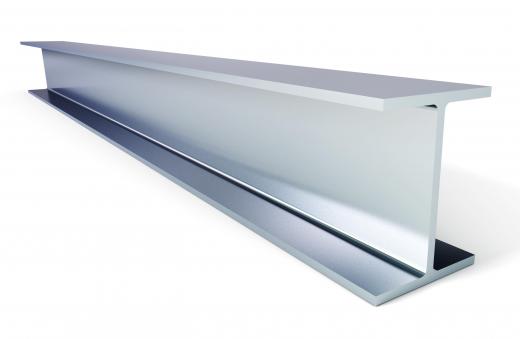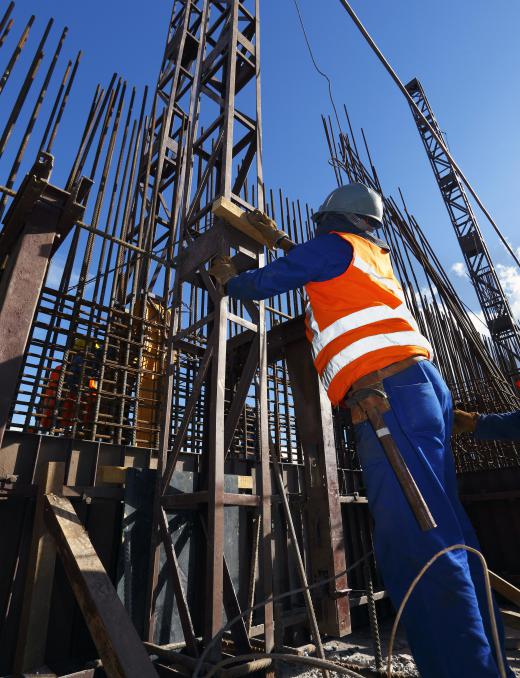A metal beam is used in the construction of a building in a variety of ways. The beams, replacing the use of wooden versions, are created by casting or forging liquid steel into the proper shape. The beams can differ in length and width as well as shape depending upon the intended use. Once ready for use, the metal beam is either welded or bolted into place and typically forms the skeleton of a building.
In a typical building project, the metal beam, often made of steel, is put into place prior to any type of floor decking or wall assembly. The placement of these beams serve as the support and structure for the entire building. Using metal versions instead of its wood predessors has made buildings more stable, long lasting and able to reach greater heights.

Building high off the ground, however, is not without its safety concerns. A metal worker is required to climb and traverse metal beams not much wider than his or her work boots and at times smaller than his boots. All of this can take place hundreds of feet above the ground and in all types of weather conditions. While work is halted in extreme weather the building often continues in poor weather.

Wind is perhaps the greatest danger when working with a metal beam. As the beam is raised and lowered into place, wind tends to blow it out of position and often causes it to twirl. This is very dangerous to the construction crew and great care is taken to avoid working in significant winds. Frost as well as morning dew are two other enemies of the metal worker. The metal beam can become ice-like when covered with a thin layer of dew or frost.
Traditionally, an iron worker would rivet a metal beam into position using red hot rivets and hammers. Eventually, the hammers were replaced by steam powered hammers that pounded the red hot rivets into position. In modern building construction, the use of rivets has been replaced by large steel bolts and even welding. This type of assembly has not only sped up the construction time, but it has cut down significantly on worker injuries.
Metal beam construction, often referred to as red iron because of the metal's dull red oxide protective finish, is often considered a skilled trade in many areas of the world. With the use of metal and concrete replacing brick and mortar, individuals skilled in the construction practices of metal beam assembly are highly sought after. The ability to work outside in the heat of summer as well as the cold of winter are traits of a metal worker; however, the greatest asset may be the ability to work at extreme heights.
